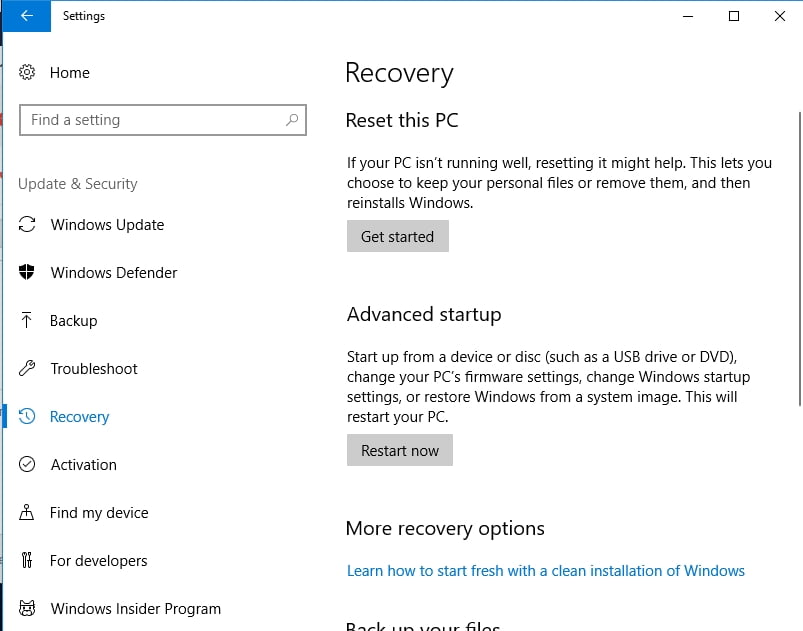
When the blue screen of death error shows up on your computer, it can prevent you from getting important work done. A range of factors can cause this problem, among which are faulty hardware corrupted pages. If you are one of the many Windows users who are experiencing this issue, you’d be glad you found this article. Keep reading if you want to learn how to fix faulty hardware corrupted pages in Windows.
Faulty hardware corrupted page meaning
You may be wondering what the faulty hardware corrupted page error means. Well, to understand it, you have to know its causes. We’ve listed some of the most common reasons behind this error:
- An incorrectly installed or uninstalled program/application.
- Malicious software or a virus that corrupted system files.
- Problems while installing a Windows update.
- Outdated, corrupted, or incorrectly configured device drivers.
- Corruption in Windows registry caused by a recent software change.
- The damaged or corrupted hard disk.
Method 1: Disabling fast startup
In some cases, the error has something to do with a computer’s fast startup option. As such, one of the best solutions to fix this problem is by disabling the aforementioned feature. With that said, follow the instructions below:
- Click the Search icon, then type “control panel” (no quotes).
- Expand the Control Panel options, then click All Control Panel Items.
- Select Power Options.
- Go to the left bar menu, then click Choose What the Power Button Does.
- Click the hyperlinked text which says, “Change settings that are currently unavailable.” You will now be able to change the Shutdown settings.
- Uncheck the box beside Turn On Fast Startup.
- Click Save Changes.
- Restart your computer and check if the error has been fixed.

Method 2: Using Windows Memory Diagnostic and System File Checker
It is also possible that the faulty hardware corrupted page error might have been caused by corrupted system files or problems in your hardware memory. You can try running Windows Memory Diagnostic and System File Checker to resolve this issue.
Running a RAM Check:
- Press Windows Key+R on your keyboard.
- Inside the run dialog, type “mdsched.exe” (no quotes).
- Once the Windows Memory Diagnostic window comes up, select Restart now and check for problems (recommended).
- Wait while the program is scanning and fixing hardware memory problems. This might take around 20 minutes.
Running System File Checker
- Press Windows Key+X on your keyboard.
- A menu will pop out. Select Command Prompt (Admin) from the list.
- In the Command Prompt, type “sfc /scannow” (no quotes), then hit Enter.
- Make sure you don’t disrupt the system scan. Once it is complete, restart your computer and check if the problem has been resolved.
Method 3: Updating all your drivers
It is always good to ensure that you have the latest versions of your drivers. Updating them fixes bugs and lets you enjoy your computer’s maximum potential. You can either manually do this or automate the process, using a reliable tool like Auslogics Driver Updater. We always recommend the latter, especially to users who are not tech-savvy. On the other hand, if you have a lot of time in your hands, you can follow the steps below:
- Click the Search icon, then type “Device Manager” (no quotes).
- Open Device Manager. You have to update all the Display drivers.
- Look for Display Adapters, then right-click the driver you’re going to update. Select Properties.
- Go to the Driver tab, then click Update Driver.
- Click OK to start the process.
We won’t deny that learning how to fix faulty hardware corrupted pages in Windows can be complicated, especially when you need to manually update your drivers. This is why we suggest using Auslogics Driver Updater. This tool will automatically recognize your operating system. Moreover, it will scan corrupted, damaged, incompatible, or outdated drivers and look for their latest manufacturer-recommended versions. The best part is, this program fixes all driver errors—not just those related to faulty hardware corrupted pages. This means that after the process, you can expect better performance and faster speed from your computer!
Method 4: Resetting your Operating System
If you’ve tried all of the methods above and none of them worked for you, we recommend resetting your operating system. Before you do this, make sure you create a complete back-up of all your important data and files. With that said, here are the steps to reset your Windows OS:
- Click the Search icon.
- Type “settings” (no quotes).
- Once you’ve opened the Settings window, select Update & Security.
- Go to the left bar menu and select Recovery.
- Click the Get Started button under the Reset this PC section.
- You see two options for resetting your computer. Choose Remove Everything.
Important Note: Again, choosing this option means that you will lose all your apps and data. So, save them before you proceed. - You will be prompted to clean the drives. We recommend selecting Just Remove My Files because it is quicker than the other option. Choose this if you still intend to use the computer after fixing the error.
- Once you see the window which says, “Ready to reset this PC,” click the Reset button.
- Once you’ve reset the system, Windows will automatically be installed.

Besides, do you want to find and remove duplicate files in Windows 10?
Have you tried any of the methods we recommended?
Let us know in the comments below!




 Done! Great to see you among our subscribers!
Done! Great to see you among our subscribers!